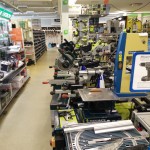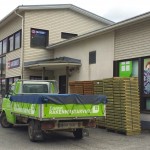Euran rakennustarvike is a family-owned hardware retail company owned by the Helin family. In 1993, the family purchased the hardware store at a time when it was on the brink of bankruptcy. Located in the small city of Eura, Finland, its target customers are local contractors, decorators, DIYers, farmers, and homeowners. The company stocks and sells building materials, timber, decorating goods, painting supplies, tools, gardening products and much more.
After running the shop for 15 years, the Helin family expanded their business by acquiring two other hardware retail stores located in neighboring cities. Each store has its own managing director who is responsible for running the shop, managing the store’s inventory, and carrying-out deliveries to customers as needed. Three years after expanding their business, the company was confronted with economic difficulties, primarily due to low sales volumes and the overall economic recession taking place in Finland.
The owners asked for help from Jorma Sieviläinen, a Commercial Advisor and a Ph.D. Student from the Turku School of Economics. Accepting the task, Sieviläinen began investigating how the profitability of the company could be improved. His discussions with the store managers revealed that the key processes of sales varied from store to store and each had their own product and supplier databases.
There was clearly a need to integrate the IT-systems and to harmonize the customer data, product pricing and assortment strategies. These tasks took several months to complete
Further financial analysis showed three other company weaknesses: customer discount levels compared to competitors were high; product purchase prices did not necessarily affect the sales prices; and staff costs were high, especially during the inactive season (October – March). These issues were tackled by introducing new customer discounts politics, product pricing methods, and negotiating with the staff to move their holidays to the inactive season thereby increasing the amount of holiday they take.
Another important change that took place was the innovation of their management model. Before the family delegated the operations to each stores’ directing managers. This caused disintegration in the company and was overall a weak management model. The company changed this by employing an approach more suitable for a retail chain. In doing this, CEO Tapani Helin (pictured above) took direct responsibility of the business and cooperation between stores. The key performance indicators were reported on a monthly basis and discussed between the CEO and the store managers, which led to increased business knowledge and more fact-based decision-making. After the above changes, in 2014 the yearly turnover remained at the same level, but the company was showing profit again.
In summary this is the story of a company that sought outside help and carefully analyzed its operations. Relying on that analysis, they discovered a need to harmonize its operations and processes, increase coordination and knowledge exchange between stores, and adopt key performance indicators to aid in decision-making. These changes turned the profit-plummeting fragmented store-based Business Model into a profitable Business Model for a chain of stores.

As a result Tapani Helin is taking the next step in business model innovation by attempting to cut the number of suppliers. Currently the company has 336 suppliers, mainly offering similar products. By concentrating on the number of suppliers, he is looking for a better negotiation position, increased savings, and more efficient supplier chain management.

